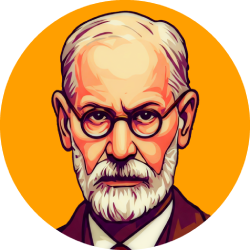Sigmund Freud’s psychoanalysis is one of the main currents of psychological thinking of the twentieth century. With his theories about the unconscious, the human personality and psychic processes, Freud influenced not only psychology but also literature and the arts. In this article, we will explore how Freudian psychoanalysis impacted these areas and how their concepts continue to be relevant today.
Introduction to Freudian psychoanalysis
THEpsychoanalysisFreud is based on the idea that human behavior is influenced by unconscious processes. According to Freud, the unconscious is a part of the mind that stores memories, memories, and repressed desires that are not accessible to consciousness. These unconscious processes can influence our emotions, thoughts and behaviors in a significant way.
Freud also developed the theory of human personality, which divides personality into three parts: the id, the ego and the superego. ID is responsible for our primitive instincts and desires, while the ego is the rational part of personality that tries to balance the desires of ID with the demands of reality. The superego, in turn, is the moral part of the personality that incorporates social norms and values.
Influence on literature
Freudian psychoanalysis had a significant impact on twentieth century literature. Many writers, such as James Joyce, Virginia Woolf and Franz Kafka, were influenced by Freud’s ideas about the unconscious and the human personality. These authors explored topics such as repression, anxiety and the pursuit of identity in their works.
For example, the novel “Ulysses” by James Joyce is an exploration of the protagonist’s unconscious mind, Leopold Bloom, while he sails the city of Dublin. The work is a classic example of the literary technique of the flow of consciousness, which seeks to capture the subjective experience of the character.
Influence on the visual arts
Freudian psychoanalysis also had a significant impact on the visual arts. Artists such as Salvador Dalí and René Magritte were influenced by Freud’s ideas about the unconscious and reality. These artists explored topics such as fantasy, dream and distortion of reality in their works.
For example, Salvador Dali’s paintings are known for their surreal and dream images, which exploit the border between the conscious and the unconscious. The work “The Persistence of Memory” is a classic example of this, with their clocks melting as if they were made of a liquid substance.
Connections with everyday life
Freudian psychoanalysis is not only relevant to literature and the arts, but also for everyday life. Freud’s concepts about the unconscious and human personality can help us better understand our own thoughts, feelings, and behaviors.
For example, the idea that our unconscious processes can influence our emotions and behaviors can help us understand why we sometimes feel anxious or annoyed for no apparent reason. Moreover, Freud’s human personality theory can help us better understand our own strengths and weaknesses, and how we can work to balance our desires and needs.
In addition, Freudian psychoanalysis can also be applied to practical contexts, such as psychotherapy and counseling. Therapists can use Freud’s ideas to help patients better understand their own unconscious processes and work to overcome emotional obstacles.
Conclusion
In short, Freudian psychoanalysis had a significant impact on literature and the arts, influencing authors and artists to explore topics such as unconscious, human personality and reality. In addition, Freud’s concepts about the unconscious and human personality can be applied to practical contexts, such as psychotherapy and counseling.
As a psychoanalyst, I can say that Freud’s ideas continue to be relevant today, offering a valuable perspective on human nature and psychic processes. If you are interested in learning more about Freudian psychoanalysis and how it can be applied to your life, I hope this article has been useful and inspiring.


